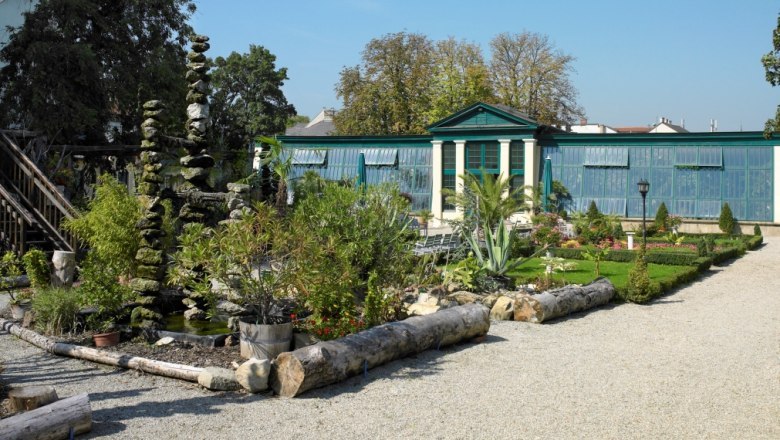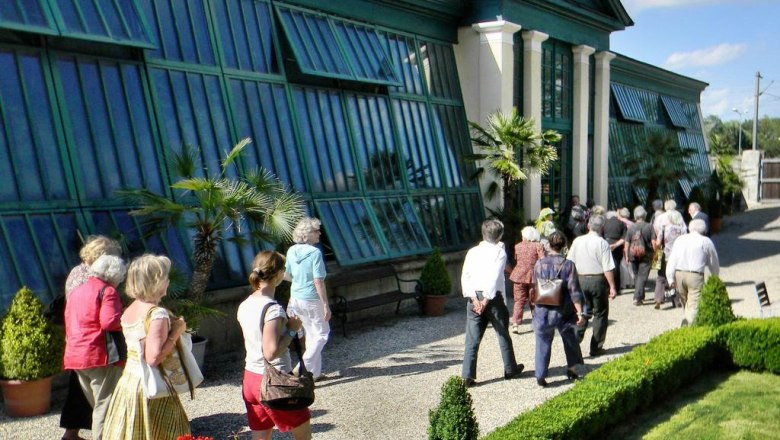Orangery and monastery garden in the Klosterneuburg Abbey
Description
The gardens of the monastery
The revitalization of the abbey gardens was completed in 2012: Adapted to the architectural surroundings, the "Gardens of the Centuries" have been created, from medieval gardens to Renaissance and Baroque gardens, English parks and modern gardens. The planting of the respective period was also reconstructed with loving attention to detail.
The orangery of the monastery
The classicist greenhouse by Joseph Kornhäusel was built in 1834-1842 as part of the expansion of Klosterneuburg Abbey under his direction for the wintering of tropical plants and as a place of recreation for the canons. Severe war damage left the building in ruins and it was not until 1995 that renovation work began. It can be visited as part of the garden tours and during the orchid exhibitions and garden days.
The monastery nursery
Floral arrangements during the liturgical year are a focal point of the activities of the abbey nursery. In addition to the large gardens and outdoor areas in the abbey grounds, the abbey nursery is also responsible for the gardens of all the abbey parishes in Lower Austria and Vienna.
However, it is not only floristic tasks that fall within the remit of the abbey nursery, but also maintenance and infrastructural measures throughout the abbey grounds. Depending on the workload and the season, the abbey nursery employs different numbers of staff who are responsible for all floristic and design work and maintenance measures. From a social point of view, people who are restricted in their ability to work are also integrated here. They find a protected work area in the nursery and complement the nursery team. In this way, the nursery not only carries out its work for God's creation, but also fulfills a social mission.


